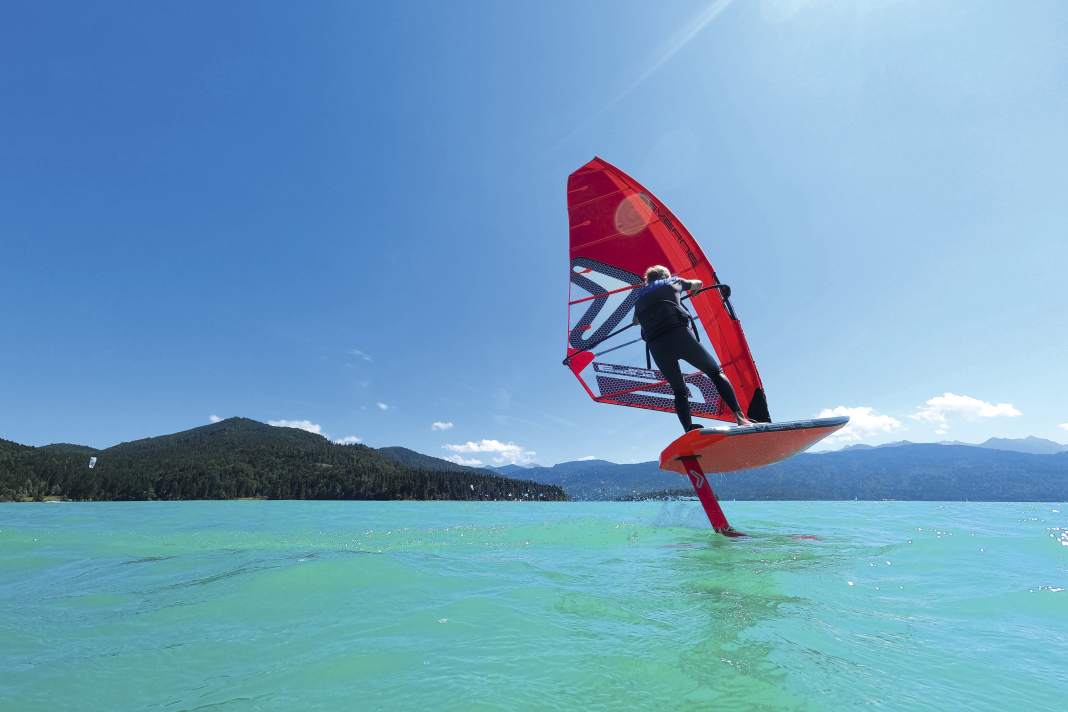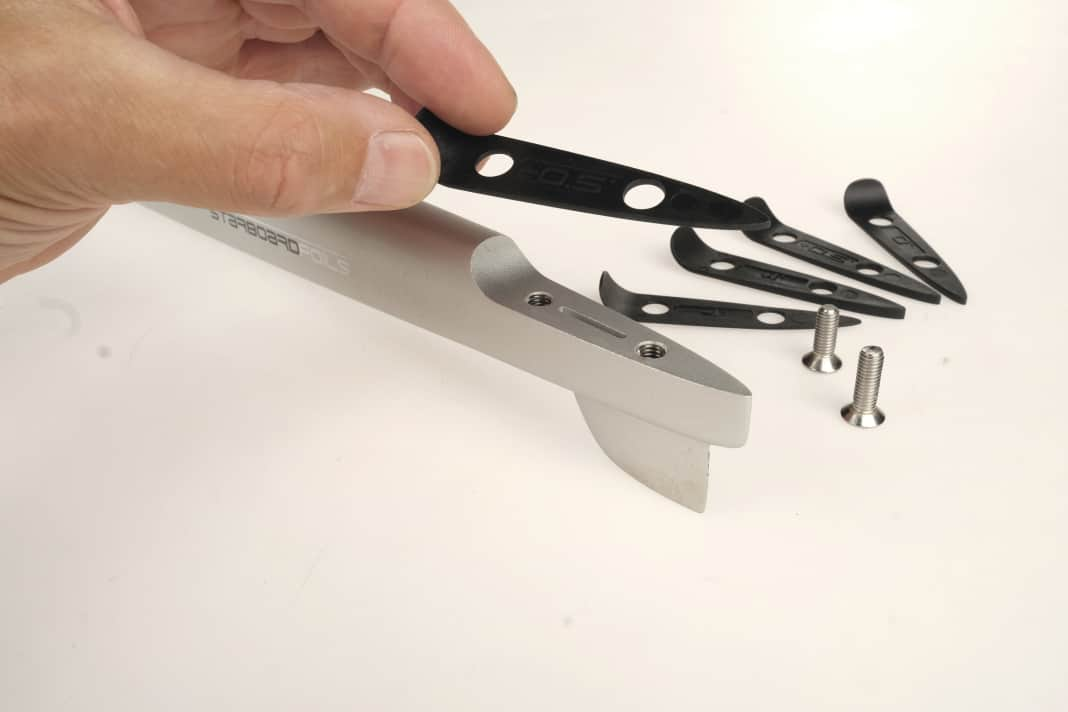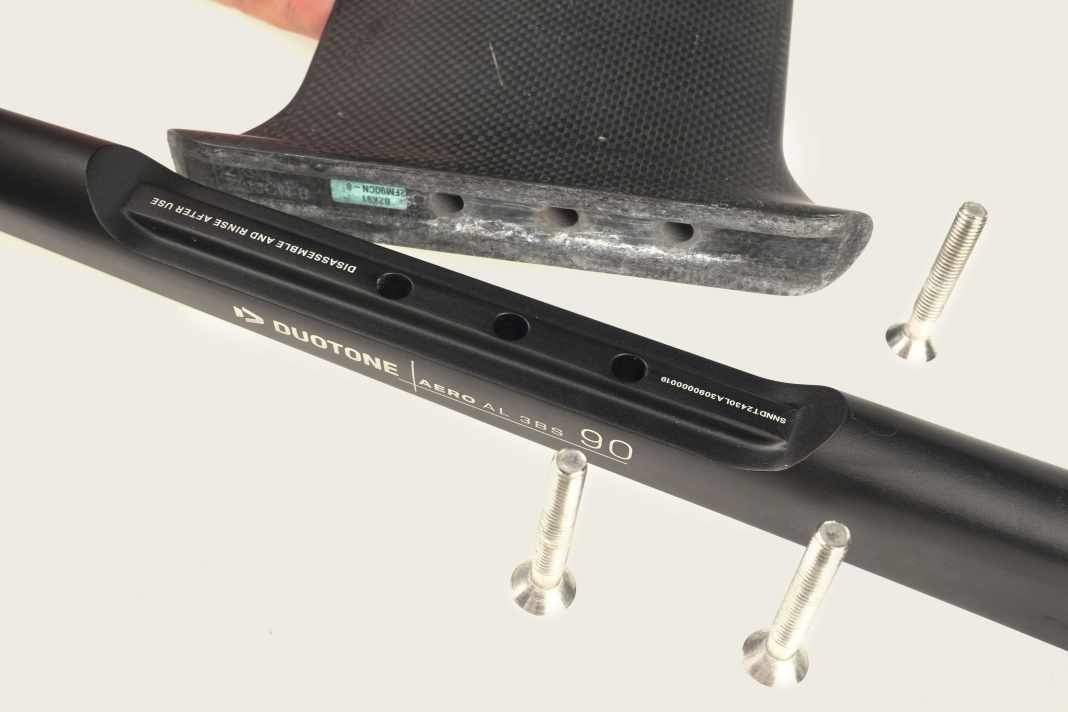Test freeride foils and boards: Five foil combinations for relaxed flying pleasure
Surf Testteam
· 17.10.2024






These boards and foils are included in the test:
While fast foils have become indispensable in windsurf racing, many windsurfers in the hobby segment either use wings or don't use them at all. Perhaps because of their own bad experiences a few years ago or because they are put off by the very demanding material used in the dominant racing scene. Freeride foils now offer very easy access and allow relaxed foiling with a small sail after a short time. However, the choice of material can still be a big mistake. Whilst classic freeride or freerace boards still differ significantly, at least in terms of their characteristics, you will be able to surf well on any current board. A wrong foil, on the other hand, can have as fatal an effect as a planing board that is 30 litres too small and make any foil progress very difficult. In any case, the five foils and four boards in the test do not all have the same genes.

Long fuselages and large stabilisers
It is certainly no coincidence that foils with a long fuselage or large stabilisers (back wing) are particularly stable in the air. When foiling, the back wing dampens all oscillating movements around the transverse axis, i.e. the unwanted "up-down" in dolphin style. The more lever length a fuselage offers to the rear or the more surface area the back wing can counteract, the smoother a foil obviously flies. These two factors have a major influence. The Duotone foil set, for example, is also sold for wing-foiling - with a correspondingly much shorter fuselage. Wing foiling requires good agility around the transverse axis for active pumping with legs and board. The longest fuselage is fitted to the Severne Alien, which extends particularly far back due to the connection to the mast. The 20 centimetre shorter fuselage of the NeilPryde GlideWind HP also results in noticeable agility on the water. Even on the particularly well-behaved Starboard, a fuselage over one metre long carries the two wings and the back wing is particularly large.
Freeride foil - the safest foil discipline
Due to the firm connection between the board and rig, windsurf foiling is a very safe foil sport and, unlike wing foiling or SUP foiling, an uncontrolled fall onto the foil in the wave is rather unlikely. If you do come into contact with the foil, rounded edges and downturned wings are helpful. This does not detract from the fun of riding. Sharp-edged, upward-curved back wings that you can step on during a water start are obviously easily dispensable for freeride foils after these test impressions. The foils from Duotone, Severne and Starboard offer the least attack surface in this respect.
Take-off and performance of the freeride foils
The tested foils allow maximum early takeoff, and at least if you are also actively pumping, an even larger wing will not bring any further gain and a sail over 6.5 square metres will also bring little. However, because you can continue to fly well below 10 knots even in wind holes, light camber sails that retain their profile are an advantage. The achievable speed is limited with this wing size, but the fun is not. And there will often be nobody on the water that you can overtake. Realistically, 35 km/h is a good value in the light wind range, which is relaxed and fun. If you are also looking for maximum performance when foiling, you need freerace material with wings between 700 and 1000 square centimetres - and then sails of 7.5 square metres or even larger.
With these foils you can get pretty close to the absolute lower wind limit.
Wing size: Would you like a little more?
The answer is usually yes, and not just at the sausage counter. For relaxed freeriding in light winds with small sails (5.3 to 6.7 square metres), you need not and should not orientate yourself towards foil racers with very large sails and front wings that are often no bigger than a proper chef's knife. Between 1250 and 1400 square centimetres proved to be very suitable for our test sails (6.0 and 6.6) with a test weight of 84 kilos and at the lower wind limit. This means you need less pumping energy, glide stably even at low speed and also gybe particularly well and safely.
Details on boards and foils






Foils between 1200 and 1400 are ideal for freeriding.
The connections between mast, fuselage and wings
Duotone and Severne try to "interlock" the connections between the mast, fuselage and front wing as well as possible with sophisticated fitting moulds - which works very effectively. The plug-in connection and the narrow contact surface on GunSails don't seem quite as sophisticated and allow slightly more flex, but the foil's performance was still fully convincing.






Conclusion: From super easy to challenging
From the group of five, Starboard and Severne are particularly recommended for foil beginners who have no previous experience, or for foil freeriders who can do without a knot of top speed in favour of foil enjoyment with maximum relaxation even at low speeds and in manoeuvres. And yet you won't outgrow these foils. With a stable flying experience and particularly easy jibing characteristics, these two combos are still a lot of fun even after several years of foil experience. The foils from GunSails and Duotone represent the "next sportier" level, which offers slightly more speed feeling but still remains easy to control. The Hy foil is probably the more demanding device, but with a lot of potential in manoeuvres for foilers who are already good at jibing. For freeriding with smaller sails, we definitely recommend the 1250 size from Duotone, while the 1000 wing is aimed at experienced foilers. From the NeilPryde-JP combination, the board is convincing for windsurf foiling and at least offers the option of trying out wing foiling. The associated foil turned out to be very demanding by current standards.

